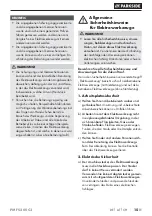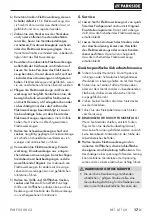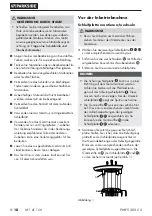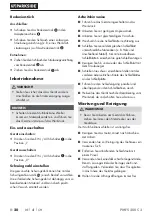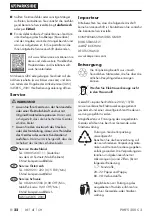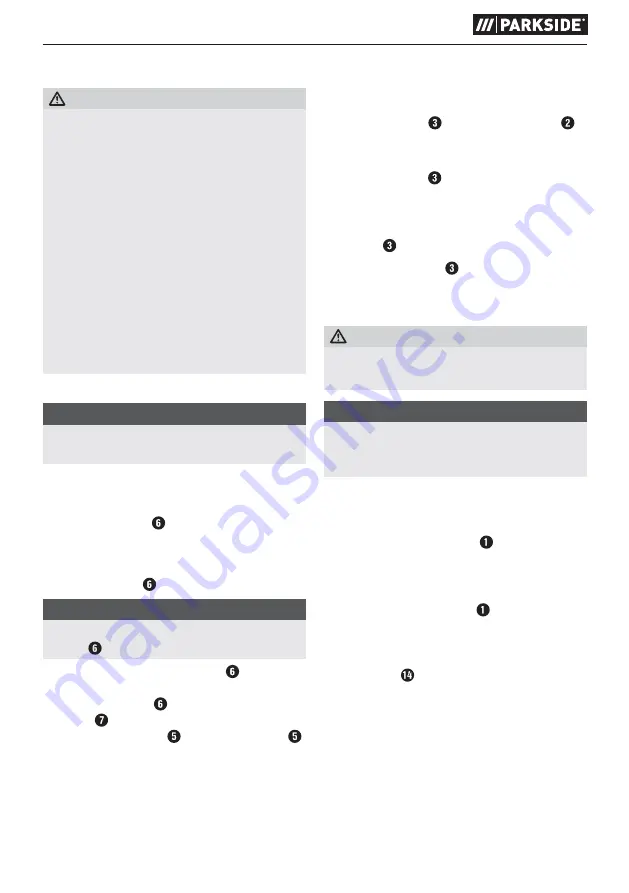
PMFS 200 C3
GB
│
IE
│
NI
│
CY
│
7
■
Dust extraction
WARNING! RISK OF FIRE!
►
When working with power tools that have a
dust collection box or can be connected to
a vacuum cleaner via the vacuum cleaner
adapter, there is a risk of fire! In unfavourable
conditions, e.g. when sparks are flying while
sanding metal or metal residues in wood,
wood dust in the dust sack (or in the vacuum
cleaner dust bag) can spontaneously ignite.
This is a particular risk if the wood dust is
mixed with paint residues or other chemicals
and the workpiece has become hot after
being worked for a long time. Therefore, do
not allow the workpiece to overheat and
always empty the dust box or the dust bag
of the vacuum cleaner before taking a break
from work.
Wear a dust mask!
NOTE
►
Perforated sanding sheets are required for
dust extraction.
Dust box
Connecting:
♦
Push the dust box onto the multi-sander as
far as the stop.
Removal:
♦
Pull the dust box backwards off the appliance.
NOTE
►
To achieve optimum dust extraction, the dust
box should be emptied regularly.
♦
To do this, remove the dust box off the
appliance as described above. To do this,
open the dust box by pressing on the release
button and pulling off the rear part. Now
remove the dust bag . Clean the dust bag
thoroughly by tapping it out.
Reducer
Connecting:
♦
Push the reducer into the adapter fitting .
♦
Push the hose of a suitable of vacuum cleaning
appliance (e.g. a workshop vacuum cleaner)
onto the reducer .
Removal:
♦
Pull the hose of the vacuum cleaner off the
reducer .
♦
Remove the reducer .
Use
CAUTION!
►
Ensure that the appliance is switched off
before connecting it to the mains.
NOTE
►
Always switch the multi-sander on before
applying it to the material, then move it over
the workpiece.
Switching on and off
Switching the appliance on:
♦
Move the ON/OFF switch to the “I” posi-
tion.
Switching the appliance off:
♦
Move the ON/OFF switch to the “0” position.
Setting the oscillating speed
You can set the desired oscillating speed using the
speed selector as required. The required speed
depends on the material being processed and can
be determined through practical tests.
Working procedures
■
Switch the appliance on before applying it to
the workpiece.
■
Apply minimal pressure when working.
■
Work at a constant speed.
■
Change the sanding sheets regularly.
IB_345815_PMFS200C3_GB-IE-NI.indb 7
19.08.20 12:02
Summary of Contents for 345815 2001
Page 3: ...A B C ...
Page 15: ...PMFS 200 C3 12 GB IE NI CY ...
Page 27: ...PMFS 200 C3 24 DE AT CH ...


















